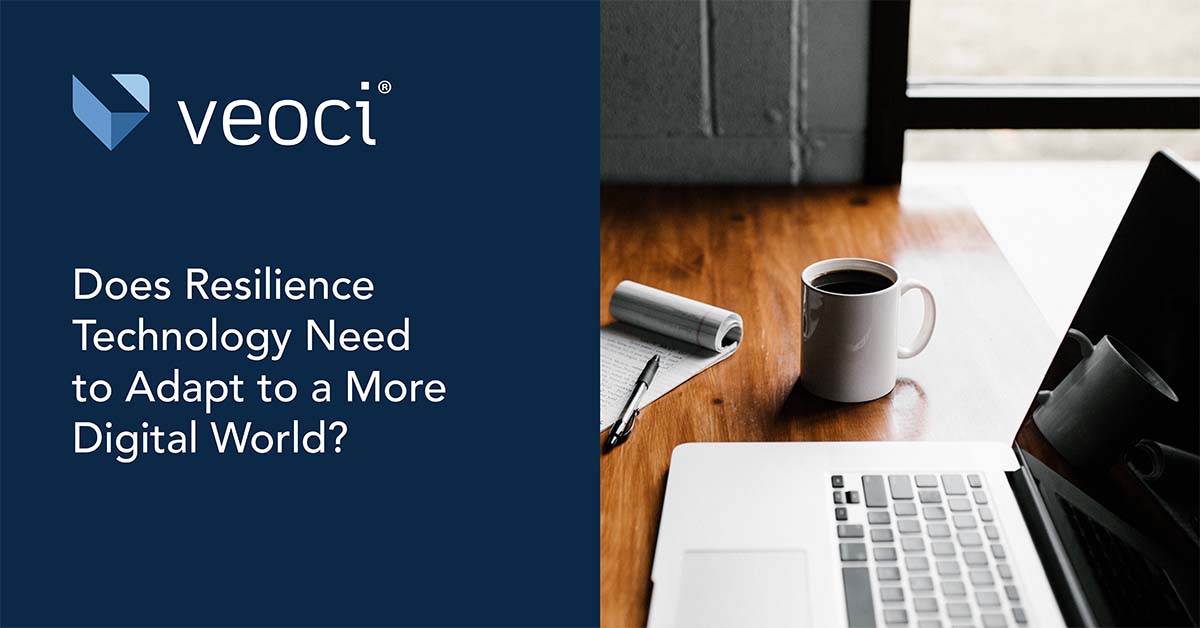As resilience as a practice has grown, its practitioners have found ways to conform technology and work it into their processes and operations. For a long time, technology has been adequate, capable of serving whatever functions practitioners have delegated to it. The Covid-19 pandemic was a big change for operational resilience, as it tested plans and technological capabilities like never before. While technology was able to keep up with the demands of the pandemic, the crisis also created new deliverables for technology to meet. With new knowledge, it’s worth asking if resilience and continuity technology needs to adapt to the more digital world Covid-19 created.
New Resilience Goals and Other Targets
Many companies learned just how effective or ineffective their resilience and recovery plans really were when the Covid-19 pandemic took hold. A lot of workers switched to virtual or hybrid work, and response plans were thrown into the race. Continuity planners saw how workers acted with plan scopes and handled communications like check-ins. Department leaders and specialists quickly found the oversights in previously laid plans and the detriment of those flaws to daily operations.
Operational resilience and the digitization of processes became important goals for many organizations following this first gamut. The pandemic was the perfect case study to demonstrate the necessity of these tools and mend the visible and invisible cracks in the plans that are meant to hold the organization up under unprecedented circumstances.
The purpose of operational resilience is to push companies through small or large scale incidents without significant losses in either money, information, or assets. The practice works around points of failure, whether those points lie in personnel, assets, or processes. Maintaining the availability of essential resources for the appropriate personnel while limiting access and vulnerabilities is one of the trade’s greatest struggles.
A New Work Dynamic
Covid-19 introduced a new landscape, as organizations needed to back up their files, give remote workers access, and ensure files were out of the reach of bad actors and cyberattacks.
Prior to the pandemic, companies tended to allocate less resources to operational resilience and business continuity than now. While industries were wisening up and making large strides in their preparedness, many still prioritized other operations over resilience and continuity.
The workforce was largely in offices and telecommuted only as needed, too. The events of the last few years have forced a shift. Large portions of the workforce are remote and won’t be returning to their desks in offices regardless of surrounding circumstances. Surviving black swan events like pandemics are much higher priorities for many organizations now as well.
The impact of Covid-19 on work processes has made resilience planning more of a reality than simply a box to check. Demand for continuity, incident, and emergency planners is higher than ever, and companies are prepared to invest in the right people and tools to keep their resilience planning at the top of its game.
The Resilience Technology Checklist
Resilience funding has been higher than normal, and digitization is receiving more attention. However, society has a short memory and it is possible that, as things return to some form of normalcy, this attention and investment in preparedness will wane. Now is a good time to focus on operational resiliency by putting planning in place. So how can continuity planners take this opportunity to improve?
First, planners should account for more permanent remote working situations. Even as society moves towards normalcy, many organizations have realized the benefits of hybrid work. Remote work is no longer a perk of a benefits package, which means organizations need to think seriously about how to keep their data secure.
The task seems daunting, but having assets digitally available makes work more efficient than ever. Although it can seem like a chore to digitally transform work, it may impart a productivity boost. Planners should regularly evaluate how their organization keeps data in the right hands, and seek out technology that puts a lock on the data that keeps business going.
Additionally, businesses should focus on building out business continuity plans more comprehensively and putting alternate processes in place. The technology that assists or carries out business continuity operations has to accommodate these conditions. Activating a business continuity plan and launching a back-up from the same location speeds up recovery and stems losses.
Planners need to stay aware of the threats of a more digital world. Bad actors and honest errors can cause outages and the loss of whole systems and sets of data; backups need to be automatic in this landscape to really build operational resilience.
Digital platforms can facilitate these backups. Platforms can store the information from past backups and help identify gaps created during a cyberattack. Technology is a planner’s best friend for this deliverable. Redundancy can save an organization, and resilience technology needs to offer this option to practitioners.
New Opportunities and Perspectives
Following Covid-19 and the move to work from home, the world is more digitized than ever. The impact the pandemic has had on resilience and what it asks of technology will persist. Now is the time to invest in continuity planning and create more comprehensive resiliency programs. The world of digital technology brings new threats and challenges, but it also brings new possibilities, and gives programs the opportunity to be more robust than ever before.








